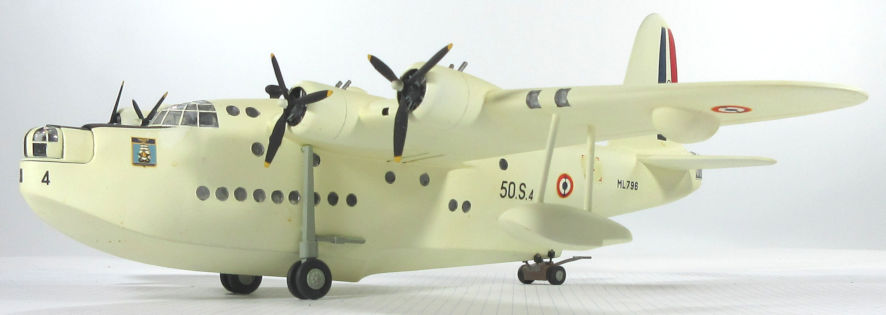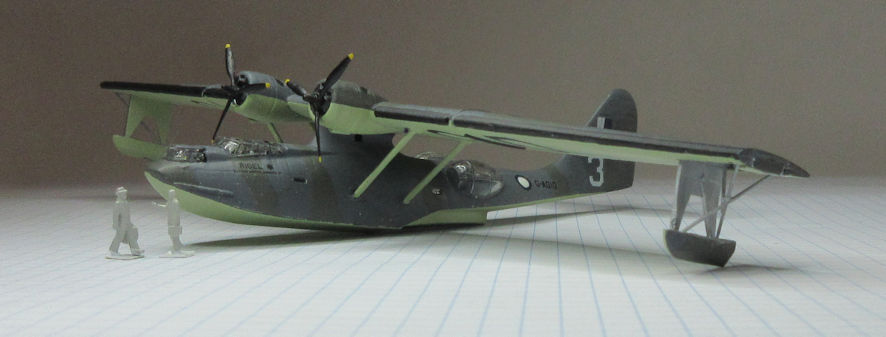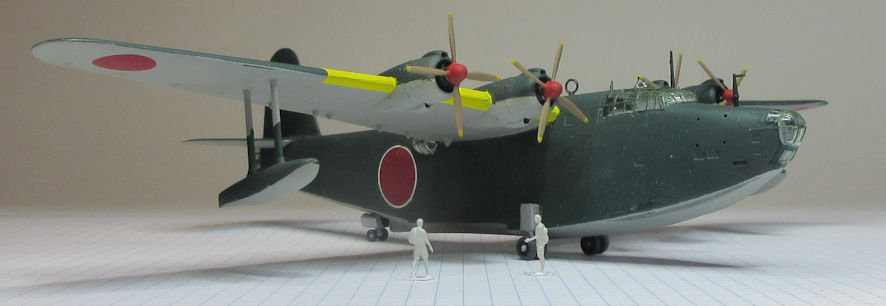Military Flying Boats
Short Sunderland – Consolidated PBY Catalina – Kawanishi H8K2
A couple of months ago I took you to galleries to look at three floatplanes and promised you we would come back and look at flying boats. So its about time we did.
Flying boats were a big thing in the 1930s as the European powers and the United States began using air transport to link them to their colonies or spheres of influence around the world. Rather than having to build big and expensive land aerodromes in remote places for landplanes is was cheaper and quicker to build flying boat bases in harbours or on lakes and rivers. In theory flying boats could also land and take-off from oceans, but only under relatively calm conditions, and that was rarely required for civil air services.
Flying boats also became popular in military service, mainly in long range patrol and bombing roles. Most maritime countries had their flying boats equipped for long range offensive and defensive operations equipped with guns, bombs and depth charges. By the beginning of World War II most countries were equipped with capable flying boats and used them in many roles including reconnaissance, mine laying, anti-submarine activities, weather reporting, convoy defense and air-sea rescue.
Short Sunderland in 1/72 by Airfix
The Short Sunderland flying boat was developed by Short in parallel with their Empire Class flying boats and had many features in common with them. Their large size meant they could be fitted with a wide range of equipment, including radar, and their strong defensive armament gave them good protection against enemy aircraft. They began entering service in 1938 and remained flying operationally after the war. France and New Zealand flew them in the Pacific into the 1960s and some were converted to Short Hythe airliners after the war.
This model was made from the Airfix 1/72 kit that was first published in 1959 and has changed little since then. It has little to recommend it except that it looks something like a Sunderland. Much better, according to reviews in Modelling Madness and Fine Scale Modeler, is the Italeri kit that was published first in 2012. That kit did not exist when I made this model in 2004 when, I made some modification to create a Sunderland Mk.V flown by the French. They are mentioned in the Workbench Note. This model should not appear yellow as it now does, that’s what happens to enamel white paint over a period of almost twenty years.
Consolidated PBY-5 Catalina in 1/144 by Minicraft
The United States Catalina patrol bomber was the most numerous aircraft of its type made during World War II. It was designed with the Pacific Ocean in mind for roles including long range reconnaissance and bombing to interdict enemy lines of supply and communication. Some also flew as long range airliners for Britain and Australia, most famously on the long Qantas flights from Perth to Sri Lanka. These hardy flying machines remained flying for many years after the war, most recently as water bombers.
There is only one kit of the Consolidated PBY in 1/144. It was first published in 1995 and is not an exceptional model, but if you want one in this scale you’re stuck with it. Only minor changes are necessary to make the version flown by Qantas but you have to make your own decals. Better might be the Academy 1/72 kit which has appeared in many boxings since 1993. Have a look at the review in Modelling Madness which simply says ‘Recommended’.
Kawanishi H8K1 (Emily) in 1/144 by LS
The Emily is generally considered the best flying boat of World War II. It entered service at the beginning of World War II and carried out reconnaissance, patrol, bombing and transport missions throughout the Pacific War. It had extremely heavy defensive armament which earned it the respect of allied aircrew. It was also effective in an anti-submarine role when equipped with anti-submarine radar and depth charges, sinking several American submarines.
This little 1/144 model was made from the LS kit and I thought it was very nice when I made it. It is probably thirty years old now but is very nicely moulded. It may be out of print and hard to find but grab a copy if you see it. If you want to make a model of this aircraft in 1/72 avoid like the plague the early Hasegawa kit which was published in 1968 and go for the later 2017 Hasegawa kit. Reviews of it, including the one on the IPMS USA site, are fulsome in their praise.


